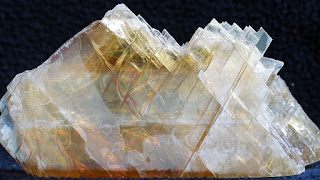Providing information on bulk materials handling (liquid and solid), plant systems engineering, specialty machine design, and process control engineering. Industry focus for the following posts are bulk handling systems, E-Liquid (E-Juice) manufacturing equipment, Biomass, plastics and polymers. For more information, visit PS&D or call (410) 861-6437
Showing posts with label wallboard. Show all posts
Showing posts with label wallboard. Show all posts
Monday, October 9, 2017
Gypsum Processing for Cement, Plaster and Wallboard
Gypsum is calcium sulfate dihydrate (CaSO4 2H2O), a white or gray naturally occurring mineral, and is used as a commercial and generic term for all calcium sulfate materials. Raw gypsum ore is processed into a variety of products such as a portland cement additive, soil conditioner, industrial and building plasters, and gypsum wallboard.
Gypsum ore, from quarries and underground mines, is crushed and stockpiled near a plant. As needed, the stockpiled ore is further crushed and screened to about 50 millimeters (2 inches) in diameter. If the moisture content of the mined ore is greater than about 0.5 weight percent, the ore must be dried in a rotary dryer or a heated roller mill. Ore dried in a rotary dryer is conveyed to a roller mill, where it is ground to the extent that 90 percent of it is less than 149 micrometers (100 mesh). The ground gypsum exits the mill in a gas stream and is collected in a product cyclone. Ore is sometimes dried in the roller mill by heating the gas stream so that drying and grinding are accomplished simultaneously and no rotary dryer is needed. The finely ground gypsum ore is known as landplaster, which may be used as a soil conditioner.
In most plants, landplaster is fed to kettle calciners or flash calciners, where it is heated to remove three-quarters of the chemically bound water to form stucco (CaSO4 1⁄2H2O). Calcination occurs at approximately 120° to 150°C (250° to 300°F) and 0.908 megagrams (Mg) (1 ton) of gypsum calcines to about 0.77 Mg (0.85 ton) of stucco.
In kettle calciners, the gypsum is indirectly heated by hot combustion gas passed through flues in the kettle, and the stucco product is discharged into a "hot pit" located below the kettle. Kettle calciners may be operated in either batch or continuous mode. In flash calciners, the gypsum is directly contacted with hot gases, and the stucco product is collected at the bottom of the calciner.
At some gypsum plants, drying, grinding, and calcining are performed in heated impact mills. In these mills hot gas contacts gypsum as it is ground. The gas dries and calcines the ore and then conveys the stucco to a product cyclone for collection. The use of heated impact mills eliminates the need for rotary dryers, calciners, and roller mills.
Gypsum and stucco are usually transferred from one process to another by means of screw conveyors or bucket elevators. Storage bins or silos are normally located downstream of roller mills and calciners but may also be used elsewhere.
In the manufacture of plasters, stucco is ground further in a tube or ball mill and then batch-mixed with retarders and stabilizers to produce plasters with specific setting rates. The thoroughly mixed plaster is fed continuously from intermediate storage bins to a bagging operation.
In the manufacture of wallboard, stucco from storage is first mixed with dry additives such as perlite, starch, fiberglass, or vermiculite. This dry mix is combined with water, soap foam, accelerators, and shredded paper or pulpwood in a pin mixer at the head of a board forming line. The slurry is then spread between two paper sheets that serve as a mold. The edges of the paper are scored, and sometimes chamfered, to allow precise folding of the paper to form the edges of the board. As the wet board travels the length of a conveying line, the calcium sulfate hemihydrate combines with the water in the slurry to form solid calcium sulfate dihydrate, or gypsum, resulting in rigid board. The board is rough-cut to length, and it enters a multideck kiln dryer, where it is dried by direct contact with hot combustion gases or by indirect steam heating. The dried board is conveyed to the board end sawing area and is trimmed and bundled for shipment.
Subscribe to:
Comments (Atom)
